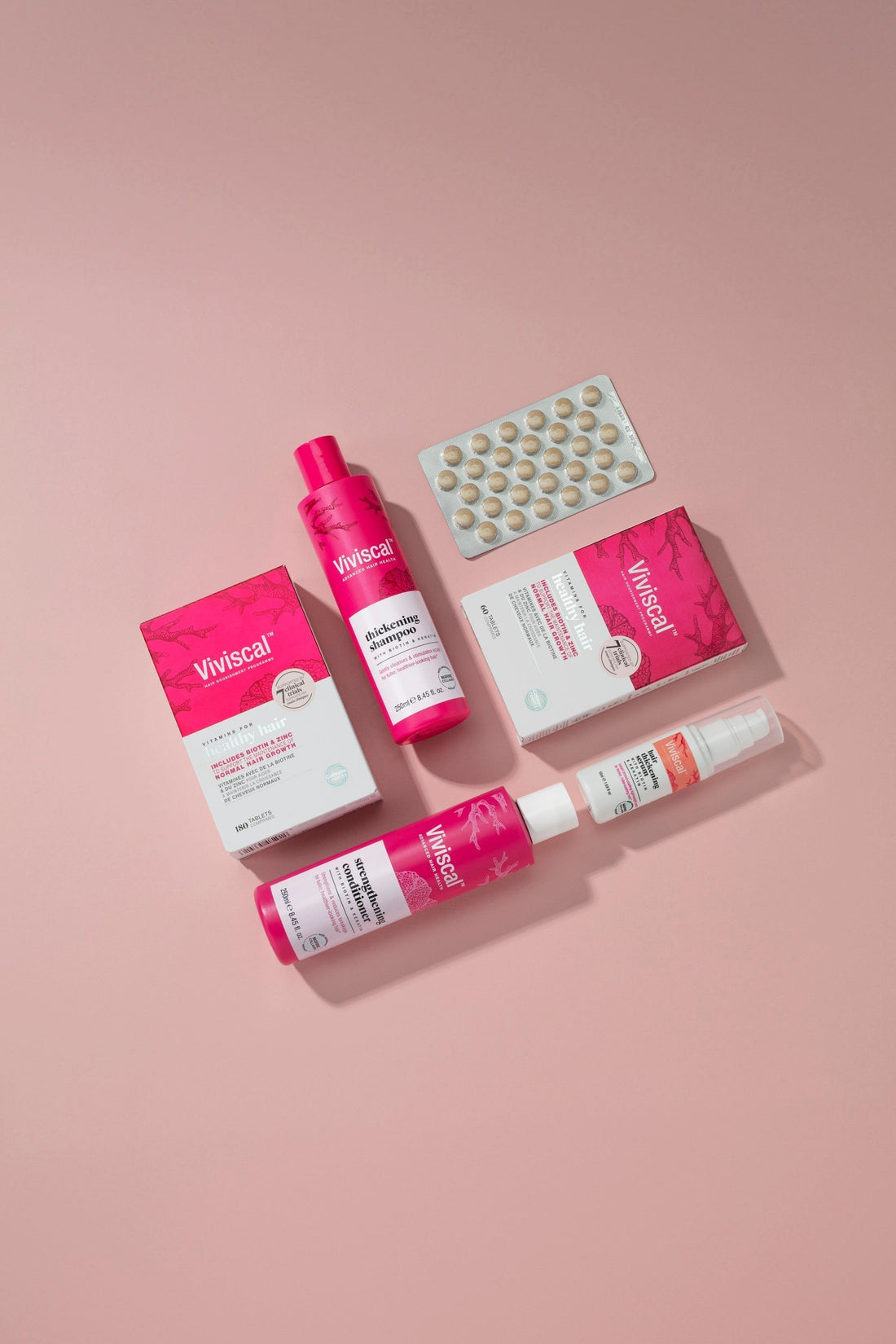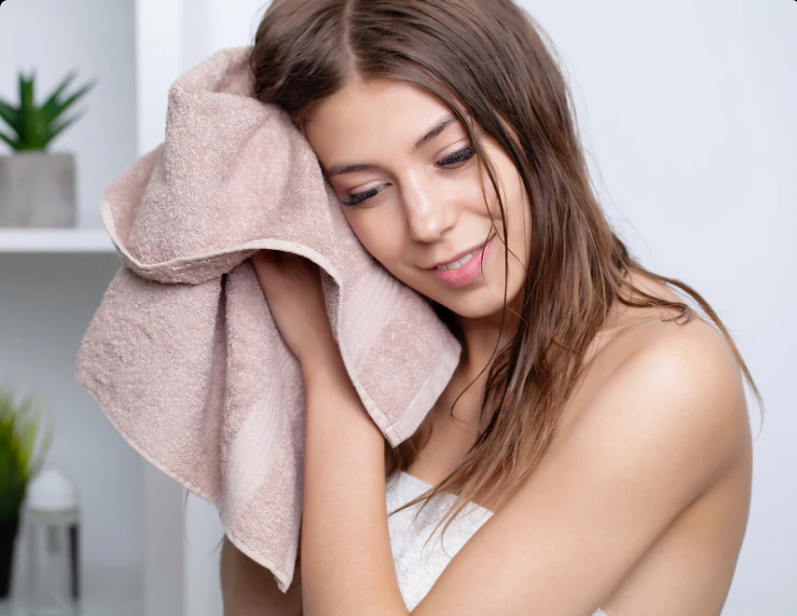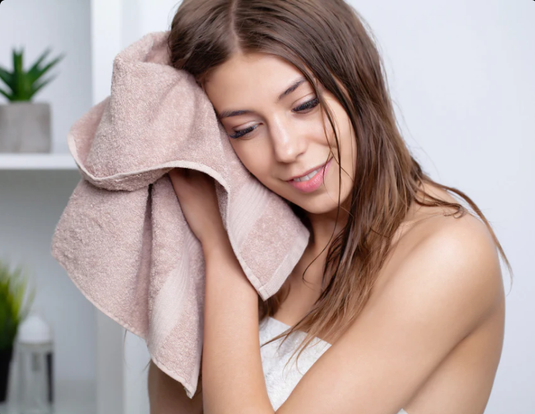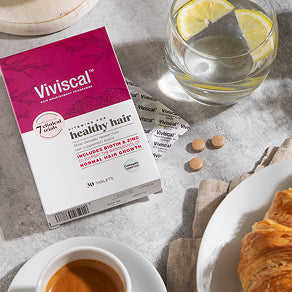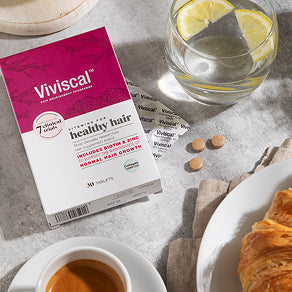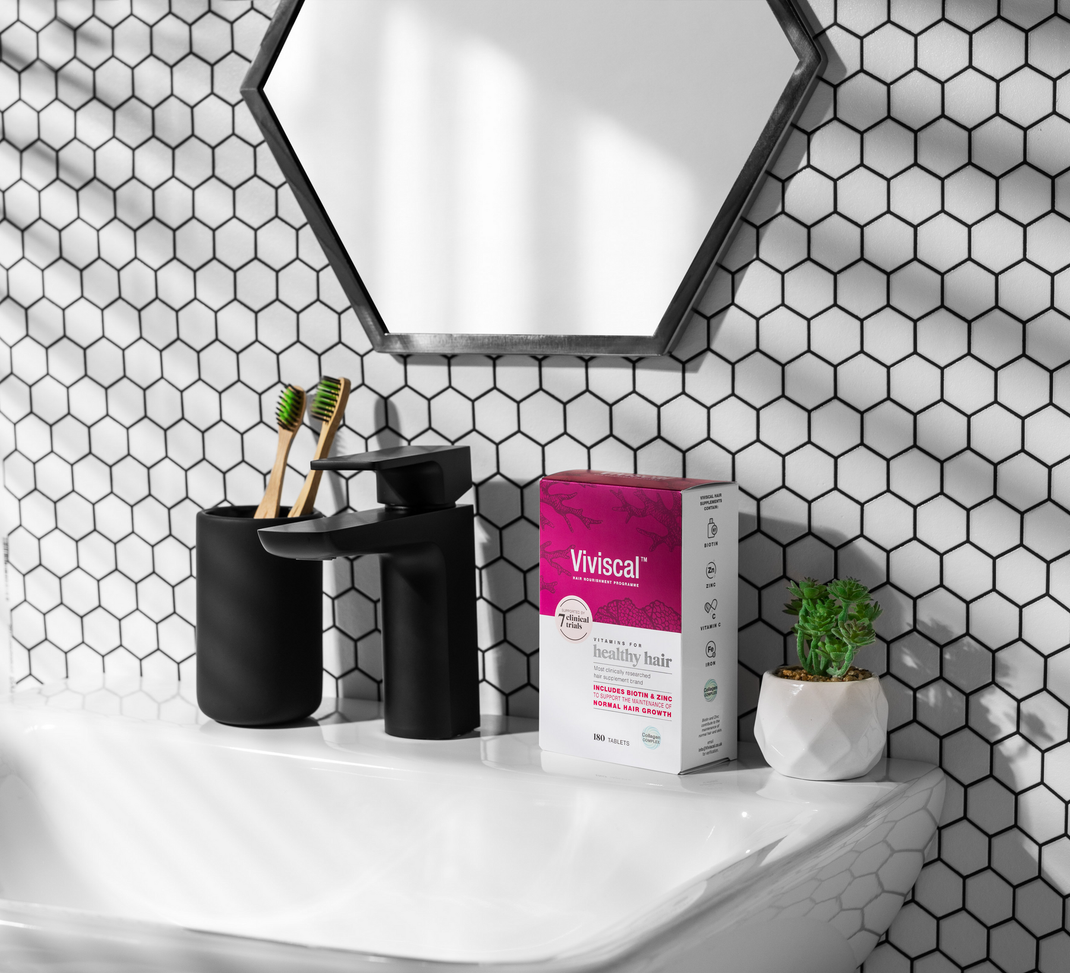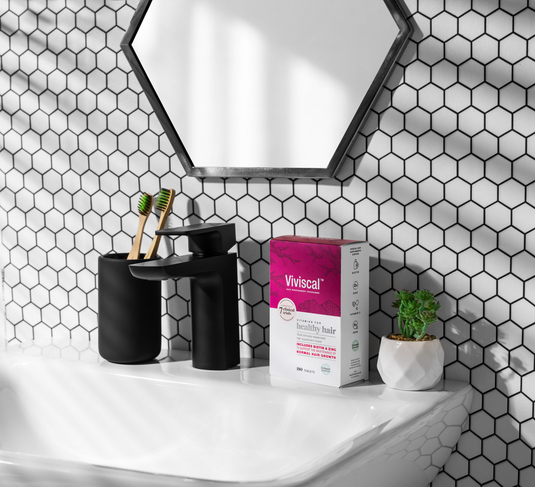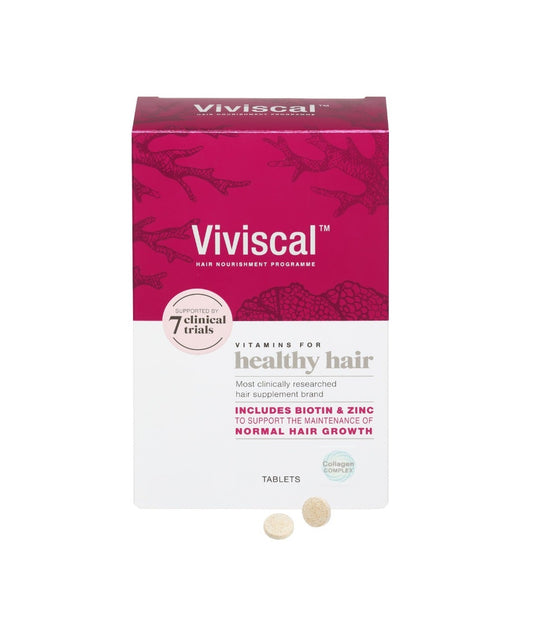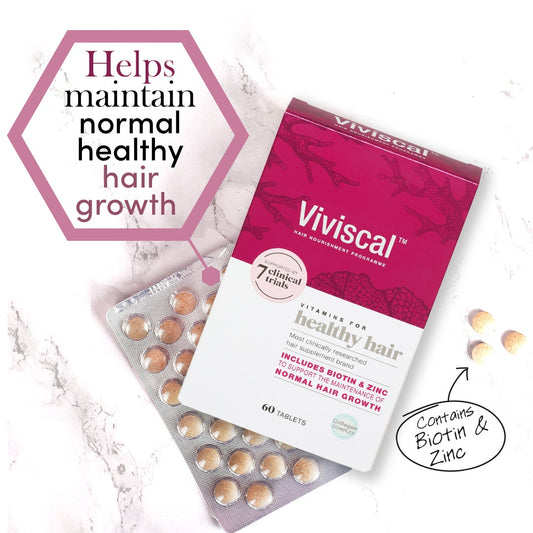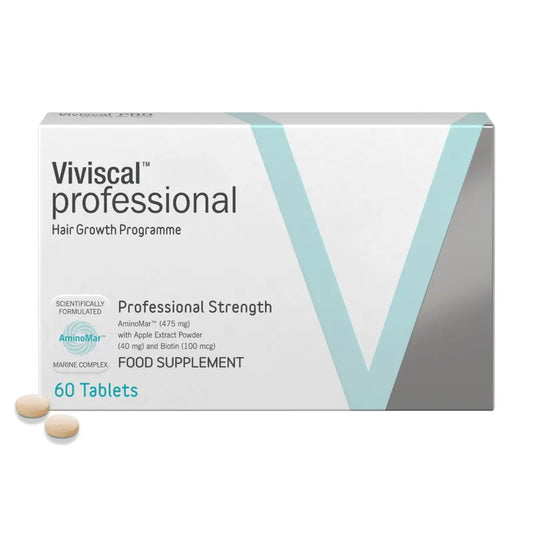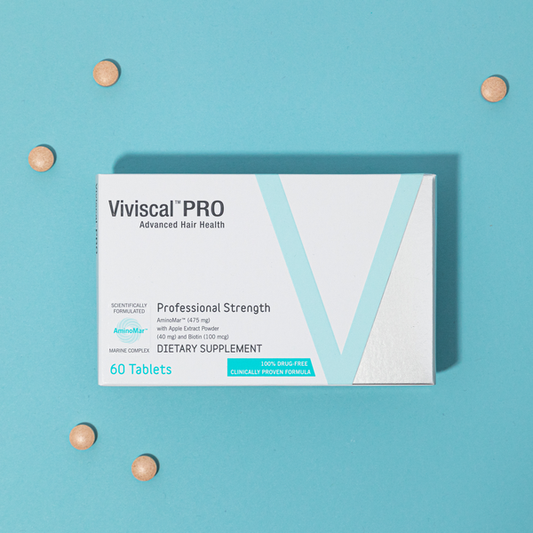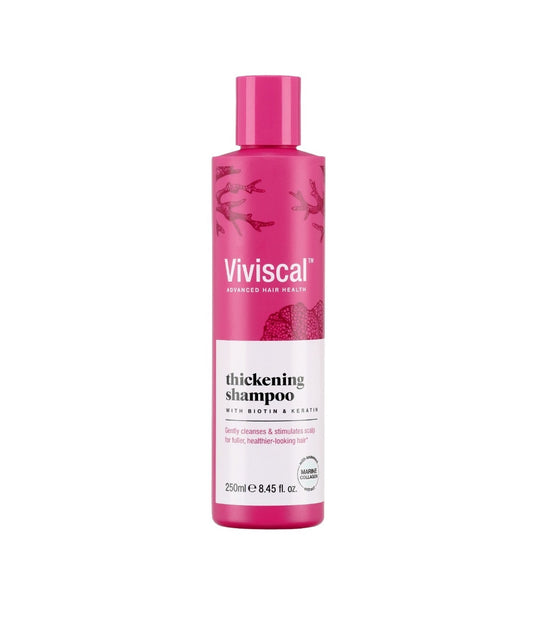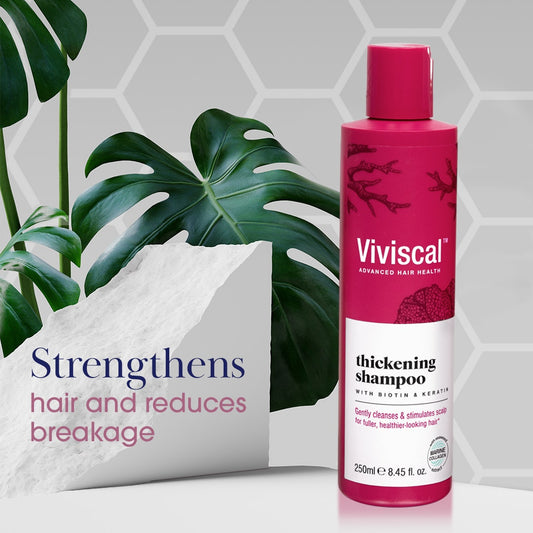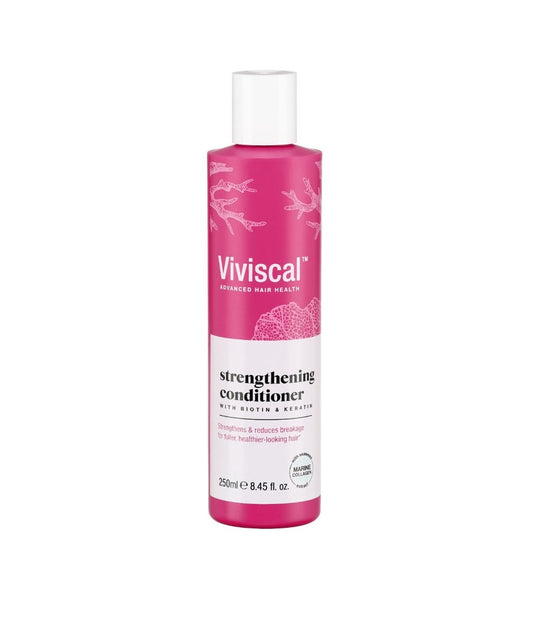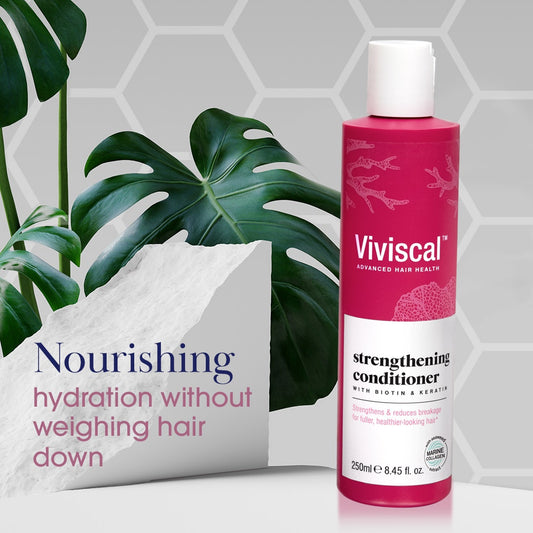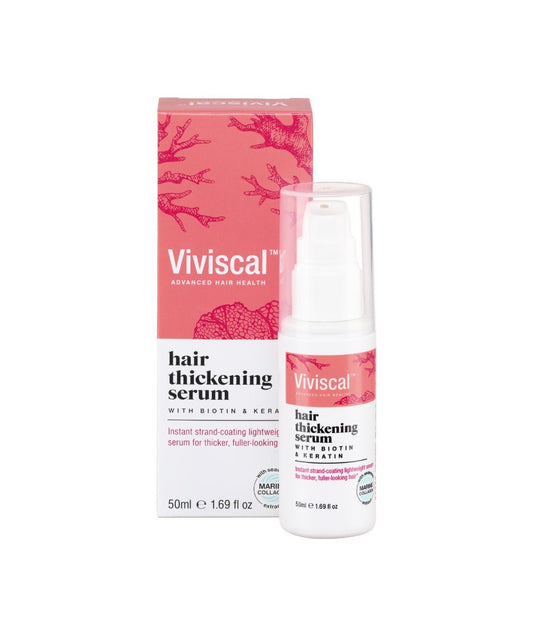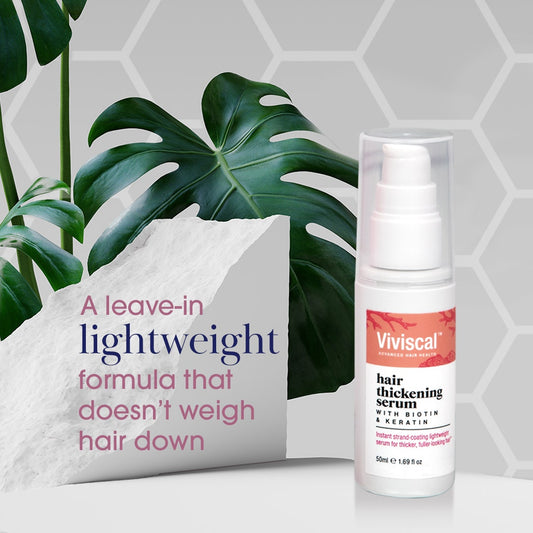Which Hair Loss Treatment is Right for You?
Are you considering treatment for your hair loss? Well, you wouldn’t be alone. Across the UK, it is estimated over 15.4 million people are suffering from hair loss at any one time.
With so many people affected and a variety of causes leading to hair loss, there are different options available to help address this. So, if you're experiencing male or female hair loss, you'll find treatment options which might work for you.
Here at Viviscal, we’re hair health experts and have compiled a list of the different hair loss treatment types available for both women and men. Read on to discover what might be best for you.
Holistic hair loss treatments
Holistic treatments are a good idea for anyone who is beginning to experience hair loss. These treatments refer to anything from scalp massages to light therapy and are often one of the least expensive options. However, as with anything not backed up by medical science and clinical testing, the results aren’t always consistent.
Light treatment for hair loss
Also referred to as ‘low-level laser therapy', ‘red light therapy’ or ‘cold laser therapy’, this treatment option involves the use of machines that omit a beam of light. This beam comprises photons that penetrate tissues in the scalp. From here, the photons can be absorbed by weak cells to encourage hair to grow.
This option is still quite experimental in terms of research and development but is nonetheless used by many to treat hair loss.
Scalp massages for hair loss
Scalp massages have become all the rage. This is due to the claim that by stimulating the scalp they promote healthy hair growth and even accelerate the rate at which hair grows.
This is largely due to the hair follicles in the scalp requiring a solid blood flow to provide them with the nutrients to produce healthy hair. While there aren’t many studies exploring this as a hair loss treatment for women and men, some research has shown that scalp massages can help existing hair become thicker.
Although this option isn’t likely to produce the desired results alone, it is a supplementary activity you may want to try alongside other treatments.
Finasteride and minoxidil
According to the NHS, finasteride and minoxidil are often used to treat male pattern baldness. Minoxidil is also a potential women's hair loss treatment option as it can be used to treat female pattern baldness. On the other hand, finasteride should not be used to treat female pattern baldness.
Minoxidil is applied directly to your scalp like a soap. Its primary function is to 'fertilise' local hair growth by nourishing the hair from the outside in. On the other hand, finasteride is designed for oral use and comes in the form of a tablet. Finasteride works by reducing the levels of hormones that are responsible for male pattern baldness from the inside.
However, this treatment method isn’t for everyone – as mentioned, finasteride can only be used by men. Another downside is the treatment's considerable time commitment.
Minoxidil has been on the market since the 1990s and since then there have been quite a few studies proving its effectiveness, but only after a sizable period has passed. For example, a study published in the Dermatologic Therapy journal in 2015 found that 59% of men with pattern balding did see an improvement, but only after a year.
If you are considering this hair loss treatment option, then consult your doctor first.
Hair transplants for hair loss
One of the most extreme treatments for hair loss is, of course, a hair transplant. There are two main types of hair transplant:
- Follicular unit transplantation (FUT)
- Follicular unit extraction (FUE)
Both are available for male and female hair loss. But both treatment methods involve surgery on the back of your head, local anesthetic, skin grafts and stitches – making them not for the faint-hearted.
As for recovery, you may need to stay in hospital overnight and, if a large area of your head is being treated, more than one session might be needed. You’ll need to book a few days off work to rest afterwards, and during the first fortnight after the procedure, you’ll need to treat your head with extreme caution since the grafts don’t heal straightaway. Usually, hair transplant patients should expect to wait a year to 18 months to see the full results.
As with any cosmetic surgery, there is a risk of infection and/or allergic reactions, as well as scarring, bleeding and the possibility that the transplant itself may not even be successful – all things you’ll need to consider when weighing up this hair loss treatment option.
Hair transplants are best suited for individuals who suffer from a genetic type of hair loss, where the entire head is rendered permanently bald, although anyone can technically have one.
A major downside of hair transplants is the cost. Currently unavailable on the NHS, hair transplants are classed as cosmetic surgery and therefore are much more expensive. According to the NHS, a hair transplant can cost anywhere from £1,000 to £30,000 (depending on the clinic, amount of hair loss and quality of the treatment).
Another downside is the intensity of this treatment option. The process is extremely traumatic for your scalp and requires a long period of recovery. For such a major procedure, check that the surgeon is registered with The British Association of Hair Restoration Surgery (BAHRS) and the General Medical Council (GMC) – both signs of legitimacy in this profession.
Steroid treatment for hair loss
Hair loss steroid treatment comes in both topical creams and injections. It is also known as ‘corticosteroids’.
Due to the way that steroids work, these options are best for hair loss caused by autoimmune conditions (such as alopecia areata, lichen planopilaris and discoid lupus erythematosus) rather than hormonal hair loss.
Steroid injections and creams for hair loss work by countering the effect of autoimmune diseases, allowing hair to grow. This treatment option is prescription only and can be intensive. Treatment takes place every four to six weeks – with as many as 80 injections per appointment!
As with any intensive treatment, there are a few possible side effects, including:
- Scalp irritation
- Thinning skin on the scalp
- Blotchy or puffy face
- Increased susceptibility to bacterial and viral infections
Viviscal’s hair loss vitamins
Lastly, comes the most accessible and cost-effective option: Viviscal’s vitamins for hair loss. Unlike finasteride, our supplements are available for both men and women and are backed by over 25 years of expert research.
Some of the hair loss treatment options listed above are not only expensive but intrusive too. For many people, then, taking our compact hair vitamins twice a day with water after food is a simple, effective way to take control of their hair loss, without spending too much or having to undergo medical procedures.
Alongside this, we produce a range of hair-thickening shampoos and conditioners that can be easily incorporated into a hair care routine as a supplement to orally taken vitamins.
To find out more about our vitamins as hair loss treatment for both women and men, head to the ‘What is Viviscal?’ page or browse through the questions on our FAQ page. In the meantime, contact us with any questions you may have.
Use a Volumizing Shampoo & Lightweight Conditioner
How do I get more volume in my thin, fine hair? We get this question a lot at Vivisical™! Many women, especially those over 40, struggle with thinning hair and lack of volume. But don’t worry – we’ve got you covered with expert tips and tricks to add volume to thin hair. Whether you’re dealing with age-related hair thinning or naturally fine strands (or both!), these tips will help you achieve fuller-looking, more voluminous locks.
Understanding Thin Hair
Before diving into solutions, let’s address why some of us have fine or thin hair:
Genetics – Your DNA largely determines your hair type. If you have a parent with thin hair, you’re much more likely to have thin hair yourself.
Aging – Nearly everyone experiences some hair loss with age. Plus, hair follicles can shrink with age, leading to finer hair.
Hormonal changes – Pregnancy, menopause, and thyroid issues can affect hair thickness.
Nutritional deficiencies – Lack of certain vitamins and minerals can impact hair health.
Stress – High stress levels can lead to temporary thinning.
Thin hair presents unique styling challenges, like:
- Lack of body and bounce
- Difficulty holding styles
- Appearing flat, especially at the roots
- Becoming greasy more quickly
But don’t despair! You can transform the appearance of thin or fine hair with the proper techniques and products.
15 Secrets to Add Volume to Fine & Thin Hair
Before diving into solutions, let’s address why some of us have fine or thin hair:
1. Use a Volumizing Shampoo & Lightweight Conditioner
How do I get more volume in my thin, fine hair? We get this question a lot at Vivisical™! Many women, especially those over 40, struggle with thinning hair and lack of volume. But don’t worry – we’ve got you covered with expert tips and tricks to add volume to thin hair. Whether you’re dealing with age-related hair thinning or naturally fine strands (or both!), these tips will help you achieve fuller-looking, more voluminous locks.
2. Skip the Towel
When drying freshly washed hair, a regular cotton terry towel can rough up the cuticle and cause breakage to fragile, wet hair. Instead, gently wrap hair in an old T-shirt or a bamboo hair wrap designed to absorb moisture without damaging it.
3. Choose a Thickening Serum
After you’ve washed your hair, apply a lightweight leave-in product like Vivisical™ Hair Thickening Serum. Vivisical™ Hair Thickening Serum coats each strand to reduce frizz, leading to thicker, fuller-looking hair^^. Whether you air dry or blow dry your hair, this is a great addition to your routine.
^^Use in conjunction with Vivisical™ Thickening Shampoo and Strengthening Conditioner
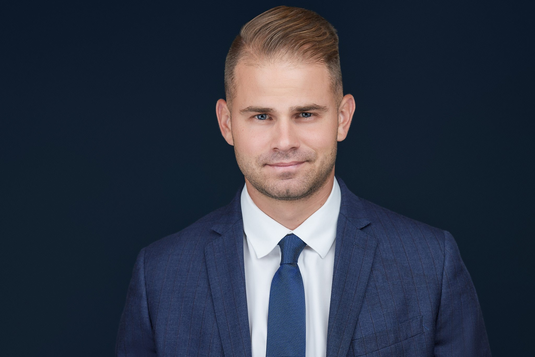
Vivisical™ has been researched, and in just one of the many studies, the people who took this supplement had more hair after taking it three months, and less hair shedding.
-Dr. Brian Heil, Doctor of Trichology
Frequently Asked Questions
How do I get more volume in my thin, fine hair?
To add volume to thin, fine hair, start with a volumizing shampoo and conditioner. Use styling products like mousse or root-lifting spray on damp hair, then blow-dry hair upside down for maximum lift. Finish with a texturizing spray or dry shampoo to add body and grip to your style.
How can I make my thin hair look thicker?
To make thin hair appear thicker, opt for a cut with long layers that create movement without losing much fullness. Use thickening products that coat the hair shaft, and consider strategic coloring techniques like highlights and lowlights to add depth and dimension. Styling hair with textures such as waves or curls can also make hair look thicker than sleek, straight styles.
How do I get more volume in my thin, fine hair?
To combat flat hair on top, apply a volumizing root spray to damp roots before blow-drying. Use the “twist and clip” method: twist sections of damp hair, clip them to your head, and let them dry for added lift. Additionally, try changing your part or using a zigzag part to create instant volume at the crown.
